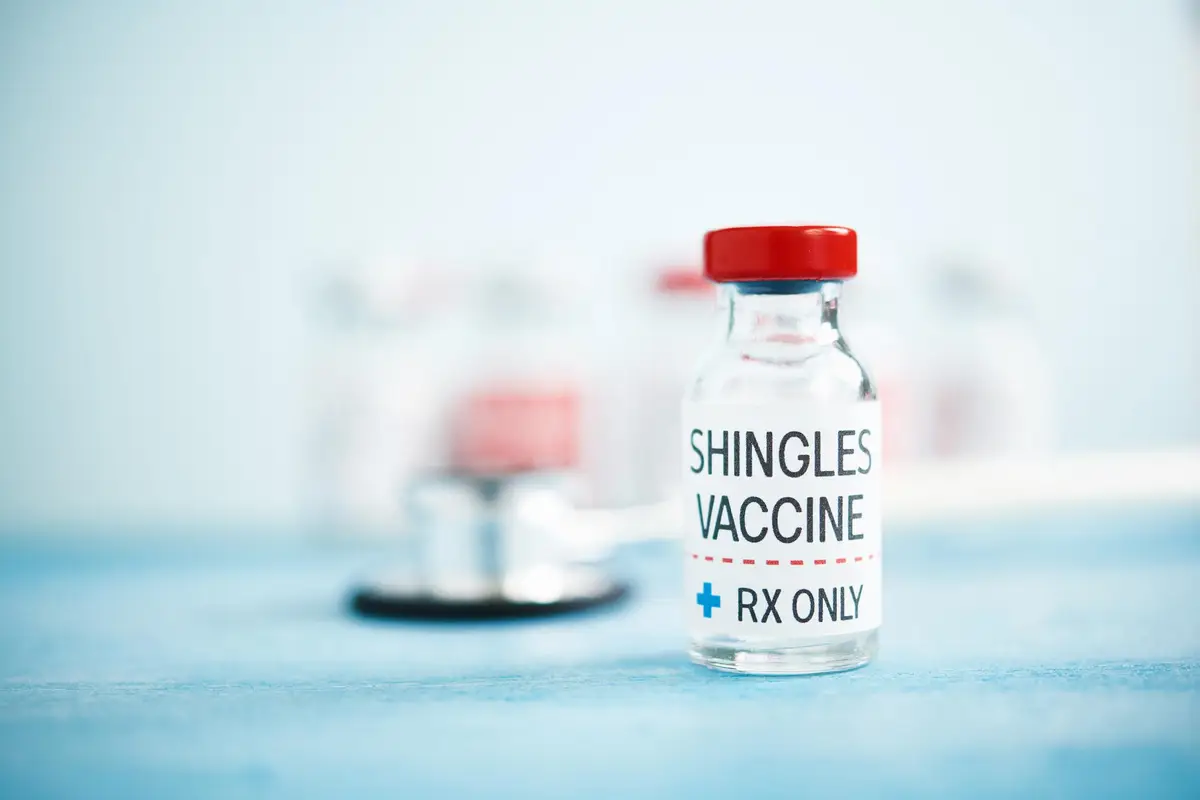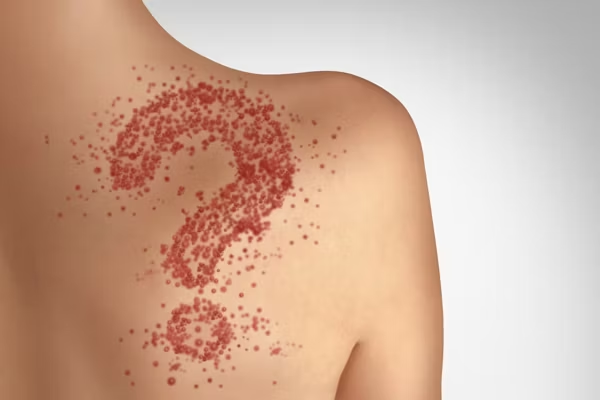If you associate shingles with old age, that's a common misconception. But anyone who has had chickenpox or the chickenpox vaccine can get shingles — including young adults. In fact, shingles infection rates have been steadily rising among younger and middle-aged adults over the past few years.
Shingles isn't life-threatening, but the intense pain and infection it can cause can be deeply disruptive. Read on to get the basics about this increasingly common infection.
What is shingles?
Shingles is a viral rash caused by the varicella-zoster virus (VZV), which is also responsible for chickenpox. Another correct name is human herpesvirus 3 — but despite the name, it doesn't cause cold sores or genital herpes.
The classic shingles rash develops as a band of fluid-filled blisters, wrapping around either side of the torso. However, shingles can develop anywhere on the body. Usually, the infections last between two and six weeks, and fewer than 4% of shingles patients experience multiple outbreaks. The rash follows the path of the nerve involved, and it rarely involves the entire body or more than one side of the body.
Unfortunately, even though shingles infections are relatively short, they can leave long-lasting consequences, such as ongoing pain. If you suspect shingles, see a board-certified dermatologist or healthcare provider quickly to reduce your risk for long-term complications.
What causes shingles?
Shingles is caused by a reactivation of the chickenpox virus, which lays dormant in the nerve tissue near the spinal cord and brain after someone recovers from chickenpox. In most cases, the lingering virus will not reemerge as shingles. Researchers still aren't certain why some people experience this painful reactivation of VZV, and why others never will.
We do know that weakened immune systems trigger shingles and that shingles can be triggered by aging, intense stress or even catching the common cold.
What are the symptoms of shingles?
Pain is the first sign of shingles and lasts for one to five days at the location where the rash will emerge. This pre-rash pain is often described as tingling, burning or even an "electrical sensation." Next, the shingles rash develops as fluid-filled blisters, usually concentrated on one side of the body. As the rash clears, the blisters may burst, bleed or scab over.
Other shingles symptoms can include:
- Fatigue
- Light sensitivity
- Fever or chills
- Stomach pain or vomiting
- Headache or muscle ache
How common is shingles?
In the United States, almost one in three people will get shingles in their lifetime, and there are over 1 million cases of shingles each year. How can this illness be so common? Because anyone who has had chickenpox or the chickenpox vaccine, which contains a live virus, is at risk — and that includes most American adults. In fact, the Centers for Disease Control and Prevention (CDC) reports that over 99% of Americans born after 1980 have had chickenpox — even if they have no recollection of it.
The good news is that severe shingles infections are rare. There are fewer than 100 deaths from shingles in the United States annually, and only 4% of shingles patients are hospitalized for serious complications.
Who is at risk for shingles?
Anyone with a weakened immune system has an increased risk for shingles. And your risk for shingles increases with age — especially after age 50 — as everyone's immune system gets weaker as they get older.
Other risk factors include:
- Human immunodeficiency virus (HIV), cancers and other diseases that weaken the immune system
- Cancer treatments like radiation and chemotherapy that lower immunity
- Certain medications designed to suppress the immune system, such as drugs used after organ transplants or medical treatments for severe psoriasis or advanced psoriatic arthritis
- Extended use of steroids, like prednisone
- Experiencing trauma or stress
How is shingles diagnosed?
Doctors can identify a shingles infection through examining your rash and evaluating your symptoms. They may collect and send a sample of the blister fluid to a lab to confirm the diagnosis.
How is shingles treated?
There is no cure for shingles, but prompt treatment with antiviral medications is key to a full recovery. In particular, beginning prescription medication within 24-48 hours can make your recovery faster and reduce your risk for serious complications.
Cold compresses, oatmeal baths and calamine lotion are just a few dermatologist-recommended home solutions for shingles infections. Healthcare providers may prescribe painkillers, such as opioids or lidocaine, to help you cope, or they may recommend over-the-counter painkillers like acetaminophen.
Can there be complications from shingles?
The most common complication of shingles is postherpetic neuralgia (PHN). Patients with PHN experience pain at the rash site after the rash clears. For some, the pain lasts for years and is debilitating. Only 10% to18% of shingles patients develop PHN, and your risk for PHN increases with age.
Most severe shingles complications arise when the shingles rash is located on the patient's face. A shingles rash developing near the eye becomes a dangerous condition called ophthalmic shingles, or "eye shingles." Untreated eye shingles can cause lasting vision damage, and it is critical to seek treatment early. Additional symptoms of eye shingles can include pink eye, facial swelling and blurry vision.
Shingles can also affect your ears. In Ramsay Hunt Syndrome, shingles blisters occur outside and inside the ear. Symptoms include vertigo, severe ear pain and possibly permanent hearing damage.
Other rare shingles complications are:
- Pneumonia
- Encephalitis (brain inflammation)
- Death
Is shingles contagious?
Shingles is not directly transmissible from one person to another. However, people with blistering shingles infections can transmit the VZV virus to anyone who hasn't had either chickenpox or the chickenpox vaccine. If someone is infected with VZV from a shingles infection, they will develop chickenpox.
Because VZV is only transmissible through direct contact with fluid from shingles blisters, covering your rash with a bandage effectively reduces the risk of spreading VZV.
How can I prevent shingles?
Currently, getting the shingles vaccine is the only way to defend yourself from both shingles and its most common complication, PHN. The good news is that the vaccine is highly effective. The CDC recommends that everyone above age 50 get two doses of the shingles vaccine, two to six months apart. You can get this vaccine even if you don't remember whether you've had chickenpox, and it is widely available.
- I Wish I’d Known About the Shingles Vaccine Sooner ›
- Fast Facts: What You Need to Know about Shingles - HealthyWomen ›
- Shingles: What It Is and How to Prevent It - HealthyWomen ›
- 13 Things You Need to Know About Shingles - HealthyWomen ›
- I Got Shingles at 29 - HealthyWomen ›







